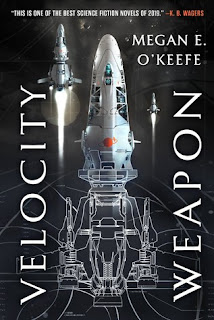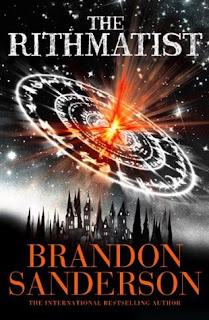We already know how to load types in .NET Framework and we know what they say we should use in .NET Core. But what about Standard? Is that a trick question? Sort of. Right now we have two .NET Standard and three .NET Core versions, albeit .NET Core 3 is in preview mode. The signature for AssemblyLoadContext and how it is used has changed dramatically. Core 3 enables context unloading, but Standard 2 does not. So you either are forced to build your library as Core 3 or you have to not use Unloading contexts or use reflection, which is not robust and probably will not be needed with the possible arrival of Standard 3.
But there are subtler issues at work. One of them is that, at least with .NET Core 3 Preview6, when you reference System.Runtime.Loader in a Standard library, so you can access AssemblyLoadContext, you get conflicts between the System.Runtime you are using and the one referenced by System.Runtime.Loader. The only solution is to use the System.Runtime.Loader NuGet package, but that returns you to the Standard 2 version of AssemblyLoadContext, even if the library version is higher!
The setup is this: I have an ITestInterface interface which resides in TestInterfaceLibrary.dll. I also have a TestImplementation class that can be found in TestImplementationLibrary.dll and implements ITestInterface. My program either does not reference any of these libraries or it only references the interface one. The task is to load both these types and then simply convert one instance of TestImplementation to ITestInterface. Simple test would be loading the types and then expecting
interfaceType.IsAssignableFrom(implementationType) to be true.
Core 3
Let's first try the Core 3 way:
var context = new AssemblyLoadContext("testContext", true);
var interfaceAssembly = context.LoadFromAssemblyPath(interfaceAssemblyPath);
var interfaceType = interfaceAssembly.GetType("TestInterfaceLibrary.ITestInterface");
Console.WriteLine(interfaceType?.ToString()??"interface type not loaded");
var implementationAssembly = context.LoadFromAssemblyPath(implementationAssemblyPath);
var implementationType = implementationAssembly.GetType("TestImplementationLibrary.TestImplementation");
Console.WriteLine(implementationType?.ToString() ?? "implementation type not loaded");
Console.WriteLine("implementation implements interface: "+interfaceType.IsAssignableFrom(implementationType));
context.Unload();
The output is:
TestInterfaceLibrary.ITestInterface
TestImplementationLibrary.TestImplementation
implementation implements interface: True
It works! But only because the interface assembly is loaded first. If you try to load just the implementation type first, it will come up as empty. There are no exceptions thrown unless you get all the assembly types or specify the
throwOnError parameter in GetType. The exception is "
System.IO.FileNotFoundException: 'Could not load file or assembly 'TestInterfaceLibrary, Version=1.0.0.0, Culture=neutral, PublicKeyToken=null'. The system cannot find the file specified.'".
In order to solve this, we need to use the Resolve event of the AssemblyLoadContext class. Let's try this:
var context = new AssemblyLoadContext("testContext", true);
context.Resolving += Context_Resolving;
var implementationAssembly = context.LoadFromAssemblyPath(implementationAssemblyPath);
var implementationType = implementationAssembly.GetType("TestImplementationLibrary.TestImplementation", true);
Console.WriteLine(implementationType?.ToString() ?? "implementation type not loaded");
var interfaceAssembly = context.LoadFromAssemblyPath(interfaceAssemblyPath);
var interfaceType = interfaceAssembly.GetType("TestInterfaceLibrary.ITestInterface", true);
Console.WriteLine(interfaceType?.ToString() ?? "interface type not loaded");
Console.WriteLine("implementation implements interface: " + interfaceType.IsAssignableFrom(implementationType));
context.Resolving -= Context_Resolving;
context.Unload();
private static Assembly Context_Resolving(AssemblyLoadContext context, AssemblyName assemblyName)
{
var expectedPath = Path.Combine(AppDomain.CurrentDomain.BaseDirectory, assemblyName.Name + ".dll");
return context.LoadFromAssemblyPath(expectedPath);
}
And now it works again, by assuming the assembly name is the same as the assembly file name and that it is found in the same place.
But... if we try this in different contexts:
var context = new AssemblyLoadContext("testContext", true);
context.Resolving += Context_Resolving;
var implementationAssembly = context.LoadFromAssemblyPath(implementationAssemblyPath);
var implementationType = implementationAssembly.GetType("TestImplementationLibrary.TestImplementation", true);
Console.WriteLine(implementationType?.ToString() ?? "implementation type not loaded");
context.Resolving -= Context_Resolving;
context.Unload();
context = new AssemblyLoadContext("testContext2", true);
context.Resolving += Context_Resolving;
var interfaceAssembly = context.LoadFromAssemblyPath(interfaceAssemblyPath);
var interfaceType = interfaceAssembly.GetType("TestInterfaceLibrary.ITestInterface", true);
Console.WriteLine(interfaceType?.ToString() ?? "interface type not loaded");
Console.WriteLine("implementation implements interface: " + interfaceType.IsAssignableFrom(implementationType));
context.Resolving -= Context_Resolving;
context.Unload();
the output will show
implementation implements interface: False
This means that if we want to encapsulate this in a TypeLoader class or something, we cannot use different contexts for dynamically loading types. Even if we had one context that we would unload in order to refresh all the types, it could still be different from the main context, in case the interface is loaded twice or referenced directly in the project.
For example, if you reference TestInterfaceLibrary directly and you load TestImplementation dynamically it will work as expected, because ITestInterface is resolved automatically from the main context. However, if you load ITestInterface dynamically, too, it will be
a different type from the referenced ITestInterface, even if they apparently have the same name and full name and assembly qualified name! So it kind of makes sense to not load a type twice. Is this where the context unloading comes in? Not really. Let's define a method that counts the number of types with a certain name in the current domain as
private static int CountTypes(string typeName)
{
return AppDomain.CurrentDomain.GetAssemblies()
.SelectMany(assembly => assembly.GetTypes().Where(t => t.FullName == typeName))
.Count();
}
And now let's run this code:
var context = new AssemblyLoadContext("testContext", true);
context.Resolving += Context_Resolving;
var referencedInterfaceType = typeof(ITestInterface);
Console.WriteLine(referencedInterfaceType?.ToString() ?? "interface type not loaded");
var interfaceAssembly = context.LoadFromAssemblyPath(interfaceAssemblyPath);
var interfaceType = interfaceAssembly.GetType("TestInterfaceLibrary.ITestInterface", true);
Console.WriteLine(interfaceType?.ToString() ?? "interface type not loaded");
Console.WriteLine($"Types are the same: {interfaceType==referencedInterfaceType}");
Console.WriteLine($"Number of types with name {interfaceType.FullName}: {CountTypes(interfaceType.FullName)}");
context.Resolving -= Context_Resolving;
context.Unload();
Console.WriteLine($"Number of types with name {interfaceType.FullName}: {CountTypes(interfaceType.FullName)}");
There is the referenced type, then we load the type dynamically again, inside a new context. We count the types loaded in the current domain, we unload the context, we count the types again. The result is
TestInterfaceLibrary.ITestInterface
TestInterfaceLibrary.ITestInterface
Types are the same: False
Number of types with name TestInterfaceLibrary.ITestInterface: 2
Number of types with name TestInterfaceLibrary.ITestInterface: 2
The types are always 2!
Bottom line, even when unloading the AssemblyLoadContext, the types used are not unloaded and trying to find a type by name will result in duplicates.
OK, so let's just agree that types with the same name, once loaded, should remain there and no other type with the same name should be loaded. Let's try to incorporate this into a TypeLoader class:
public class TypeLoader : IDisposable
{
private readonly AssemblyLoadContext _context;
public TypeLoader()
{
_context = new AssemblyLoadContext(GetType().FullName, true);
_context.Resolving += Context_Resolving;
}
private Assembly Context_Resolving(AssemblyLoadContext context, AssemblyName assemblyName)
{
var expectedPath = Path.Combine(AppDomain.CurrentDomain.BaseDirectory, assemblyName.Name + ".dll");
return context.LoadFromAssemblyPath(expectedPath);
}
public Type LoadType(string typeName, string assemblyPath)
{
var type = AppDomain.CurrentDomain.GetAssemblies()
.SelectMany(assembly => assembly.GetTypes().Where(t => t.FullName == typeName))
.FirstOrDefault();
if (type != null)
{
return type;
}
var assembly = _context.LoadFromAssemblyPath(assemblyPath);
return assembly.GetType(typeName, true);
}
public void Dispose()
{
_context?.Resolving -= Context_Resolving;
_context?.Unload();
}
}
The code in our test is now much clearer:
var interfaceAssemblyPath = Path.Combine(AppDomain.CurrentDomain.BaseDirectory, "TestInterfaceLibrary.dll");
var implementationAssemblyPath = Path.Combine(AppDomain.CurrentDomain.BaseDirectory, "TestImplementationLibrary.dll");
var interfaceTypeName = "TestInterfaceLibrary.ITestInterface";
var implementationTypeName = "TestImplementationLibrary.TestImplementation";
using (var loader = new TypeLoader())
{
Type referencedType = typeof(TestInterfaceLibrary.ITestInterface);
var interfaceType = loader.LoadType(interfaceTypeName, interfaceAssemblyPath);
var implementationType = loader.LoadType(implementationTypeName, implementationAssemblyPath);
Console.WriteLine($@"
referenced type: {referencedType}
interface type: {interfaceType}
implementation type: {implementationType}
referenced and loaded interfaces are the same: {referencedType == interfaceType}
interface implemented: {interfaceType.IsAssignableFrom(implementationType)}");
}
and the result is
referenced type: TestInterfaceLibrary.ITestInterface
interface type: TestInterfaceLibrary.ITestInterface
implementation type: TestImplementationLibrary.TestImplementation
referenced and loaded interfaces are the same: True
interface implemented: True
But we still use Unload. Maybe it will work some day as I want it to work, but until then, why not get rid of Unload and make TypeLoader a class in a Standard 2 library?
Standard 2
For this I will create a new Standard 2 library project and then reference it in our test Core 3 project. Then I will move the TypeLoader class in the library project.
The errors in the library project are related to not knowing what an AssemblyLoadContext is, therefore the first solution is to reference System.Runtime.Loader from the framework. I get the immediate error "
Assembly 'System.Runtime.Loader' with identity 'System.Runtime.Loader, Version=4.1.0.0, Culture=neutral, PublicKeyToken=b03f5f7f11d50a3a' uses 'System.Runtime, Version=4.2.1.0, Culture=neutral, PublicKeyToken=b03f5f7f11d50a3a' which has a higher version than referenced assembly 'System.Runtime' with identity 'System.Runtime, Version=4.1.2.0, Culture=neutral, PublicKeyToken=b03f5f7f11d50a3a".
Solution 2: load the System.Runtime.Loader NuGet package, which at the time of writing this, is version 4.3.0. The error is now gone, but several things are immediately apparent:
- the Unload method doesn't exist anymore
- the constructor doesn't receive a name and a bool anymore
- AssemblyLoadContext is now abstract
In order to solve this I am creating a DynamicAssemblyLoadContext class that inherits from AssemblyLoadContext and just return null from the Load method overload, and I give it an Unload method and a constructor with a string and a bool that don't do anything. And it works again. The updated TypeLoader class is now:
public class TypeLoader : IDisposable
{
private readonly DynamicAssemblyLoadContext _context;
public TypeLoader()
{
_context = new DynamicAssemblyLoadContext(GetType().FullName, true);
_context.Resolving += Context_Resolving;
}
private Assembly Context_Resolving(AssemblyLoadContext context, AssemblyName assemblyName)
{
var expectedPath = Path.Combine(AppDomain.CurrentDomain.BaseDirectory, assemblyName.Name + ".dll");
return context.LoadFromAssemblyPath(expectedPath);
}
public Type LoadType(string typeName, string assemblyPath)
{
var type = AppDomain.CurrentDomain.GetAssemblies()
.SelectMany(ass => ass.GetTypes().Where(t => t.FullName == typeName))
.FirstOrDefault();
if (type != null)
{
return type;
}
var assembly = _context.LoadFromAssemblyPath(assemblyPath);
return assembly.GetType(typeName, true);
}
public void Dispose()
{
_context?.Resolving -= Context_Resolving;
_context?.Unload();
}
private class DynamicAssemblyLoadContext : AssemblyLoadContext
{
public DynamicAssemblyLoadContext(string name, bool isCollectible)
{
}
protected override Assembly Load(AssemblyName assemblyName)
{
return null;
}
public void Unload()
{
}
}
}
The safe way
The code above has an issue, though.
If the interface type is dynamically loaded before its referenced type is used, this fails again. This is the case when you use dependency injection. You dynamically load the types in order to register the implementation relationship to the interface, but then, when you ask for a resolution for the interface type, now referenced by the main project, you get another type named just the same.
The safe way, considering that we don't really use Unload and we don't count on it every working, why not use the default context, the one where everything loads, and be done with it. When you do that, the code becomes a little uglier, but it works in all situations.
Final version.public class TypeLoader
{
private readonly object _resolutionLock = new object();
private Assembly Context_Resolving(AssemblyLoadContext context, AssemblyName assemblyName)
{
var expectedPath = Path.Combine(AppDomain.CurrentDomain.BaseDirectory, assemblyName.Name + ".dll");
return context.LoadFromAssemblyPath(expectedPath);
}
public Type LoadType(string typeName, string assemblyPath)
{
var context = AssemblyLoadContext.Default;
lock (_resolutionLock)
{
context.Resolving += Context_Resolving;
var type = AppDomain.CurrentDomain.GetAssemblies()
.SelectMany(ass => ass.GetTypes().Where(t => t.FullName == typeName))
.FirstOrDefault();
if (type != null)
{
return type;
}
var assembly = context.LoadFromAssemblyPath(assemblyPath);
type = assembly.GetType(typeName, true);
context.Resolving -= Context_Resolving;
return type;
}
}
}
You just gotta hate that adding and removing the event inside a lock, right? Well, if you find a better solution, let me know.
 Robert Jackson Bennett caught my attention with the first book in the Divine Cities series: City of Stairs. It was a steam-punk and magic detective story featuring a strong female character and her trusty sidekick, with great world building and character work. City of Blades is kind of the same, but slightly darker.
Robert Jackson Bennett caught my attention with the first book in the Divine Cities series: City of Stairs. It was a steam-punk and magic detective story featuring a strong female character and her trusty sidekick, with great world building and character work. City of Blades is kind of the same, but slightly darker.


















 It wasn't the writing, it is competent, without having any other redeeming quality. It wasn't the story, which is as banal as the book cover and the title, but bearable. It was the main character, a person so ordinary that he freezes whenever he is in danger, loses everything he loves several times from people who threaten him with violence and who for seven chapters, under the guise of thinking like a scientist, attempted in vain to realize what was obvious to the reader from the start. Yeah, OK, how dare he not be a superhero with indomitable courage and magical powers! I accept my part of the responsibility, however I could not for the life of me continue to read
It wasn't the writing, it is competent, without having any other redeeming quality. It wasn't the story, which is as banal as the book cover and the title, but bearable. It was the main character, a person so ordinary that he freezes whenever he is in danger, loses everything he loves several times from people who threaten him with violence and who for seven chapters, under the guise of thinking like a scientist, attempted in vain to realize what was obvious to the reader from the start. Yeah, OK, how dare he not be a superhero with indomitable courage and magical powers! I accept my part of the responsibility, however I could not for the life of me continue to read 
 I can't decide if
I can't decide if 


 I have to admit that my expectations for this book were so high that it was probably doomed to not satisfy me. I was expecting something deeply Asian, with fantastic elements and fresh ideas and characters. What I got is something that is almost accidentally fantastical and has few cultural elements to make it fresh. Yet it does have interesting characters and, if it weren't for the plot, which meanders whichever way the author needs to further her agenda, it would have been a good book.
I have to admit that my expectations for this book were so high that it was probably doomed to not satisfy me. I was expecting something deeply Asian, with fantastic elements and fresh ideas and characters. What I got is something that is almost accidentally fantastical and has few cultural elements to make it fresh. Yet it does have interesting characters and, if it weren't for the plot, which meanders whichever way the author needs to further her agenda, it would have been a good book.  It was one of the few
It was one of the few  I thought long and hard how to start this review and I think the best place is the ending. In July 2015 the Internet and even the classic media exploded with the news of the American space probe named
I thought long and hard how to start this review and I think the best place is the ending. In July 2015 the Internet and even the classic media exploded with the news of the American space probe named 